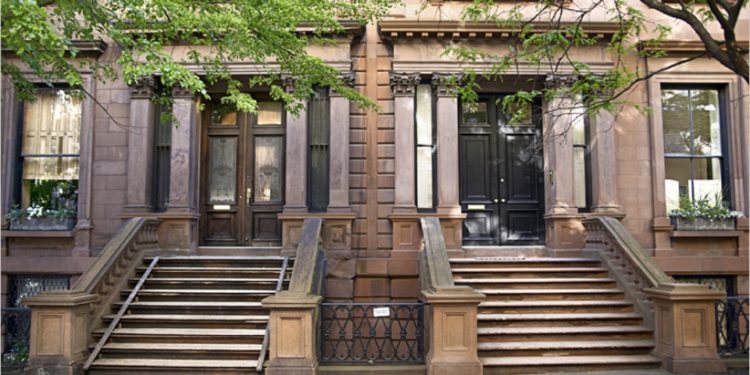Embraced by the Caucasus Mountains, Georgia’s architectural scenery is transforming significantly, skillfully combining tradition and innovation. This lively interaction between longstanding practices and contemporary approaches vividly illustrates a nation that cherishes its heritage while fearlessly advancing into tomorrow. In this blog, we delve into Georgia’s architectural journey; we’ll traverse the elaborate trails where tradition intertwines with innovation, crafting the distinctive contours of the nation’s contemporary cityscape.
Meama Factory Building: Where Tradition Meets Sustainability
A contemporary gem in the heart of Tbilisi, the Meama Coffee Factory stands out as more than just a coffee production facility—it’s a modern architectural icon that adeptly weaves tradition into the fabric of sustainability. Crafted by the skilled architect Giorgi Khmaladze, this building transcends its functional role, transforming into a living tribute to Georgia’s cultural heritage and a beacon of commitment to eco-friendly practices.
Meama has claimed various awards for its innovative architectural vision, surpassing nominees like Jaguar and TikTok. This recognition underscores its exceptional design that seamlessly merges tradition and innovation. The building cleverly incorporates traditional Georgian elements, including the iconic “Chorkor” wooden balconies, engaging in a visual dialogue with the past. Simultaneously, its transparent facade bathes the interior in natural light, embodying a sustainable ethos.
In Tbilisi, a visit to Meama is an opportunity to witness an aesthetic marvel and to experience how tradition and innovation coexist harmoniously in a modern urban landscape. Its accolades solidify its place as a trailblazer, celebrating the intersection of tradition, sustainability, and cutting-edge design on the global architectural stage.
The Bridge of Peace: Connecting Past and Present
Spanning the Mtkvari River in Tbilisi, The Bridge of Peace is not merely a physical connection; it’s a symbolic link between the nation’s storied past and its dynamic present. Designed by Michele De Lucchi, this iconic bridge serves as an artistic interpretation of Georgia’s journey from tradition to innovation. As we traverse the bow-shaped structure adorned with LED lights, we uncover the symbolic significance that transforms The Bridge of Peace into a luminous beacon, echoing the nation’s resolve to embrace progress while honouring its cultural heritage.
The House of Parliament in Kutaisi: A Spanish Touch in Georgian Politics
Spanish architect Alberto Domingo Cabo leaves an indelible mark on Georgia’s political landscape with the House of Parliament in the ancient city of Kutaisi. Constructed between 2009-2012, this transparent glass structure with a hemispherical shape is a departure from convention, reflecting Georgia’s openness to diverse architectural influences. As we explore this unique intersection of Spanish design and Georgian politics, we unravel the layers of transparency and symbolism embedded within the House of Parliament’s walls.
The House of Justice: Asymmetry Along the Mtkvari River
Designed by Massimiliano Fuksas, the House of Justice in Tbilisi stands as an asymmetrical marvel along the banks of the Mtkvari River. The overlapping volumes, resembling structurally independent ‘petals,’ create a visual spectacle that mirrors the complexities of the legal systems housed within. In this chapter, we dissect the avant-garde design of the House of Justice, unveiling the intricate dance between asymmetry and functionality that defines this landmark in Georgia’s architectural landscape.
The Batumi Alphabet Tower: Celebrating Linguistic Heritage
In the coastal city of Batumi, Batumi’s Alphabet Tower becomes a towering celebration of Georgia’s linguistic heritage. A sizeable observational tower made of metal and glass, it gracefully embraces a double helix, with each strand adorned by the letters of the Georgian alphabet. The usage of the Georgian letters, symbolising the DNA of Georgia, represents the prominence of the Georgian language within the nation. By placing this ancient alphabet on such a modern structure, the Alphabet Tower signifies that Georgia, with all its proud history and culture dating back millennia, is ready to embrace the future.
Final Thoughts
Georgia’s architectural odyssey is more than a mere visual spectacle; it’s a narrative that unfolds across skylines, revealing a nation’s spirit and resilience. Each building, from the Meama Factory to the Batumi Alphabet Tower, contributes a distinctive chapter to this ongoing story. As we conclude our journey through the nuances of tradition and the bold strokes of innovation, we reflect on how Georgia’s architectural landscape is a dynamic canvas, reflecting the nation’s ability to embrace its history while charting an inspired course into the future.









































































